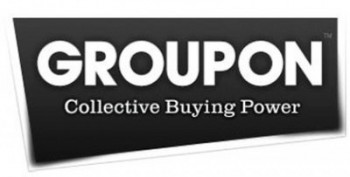Just when you thought social media was going to rule the digital world, it is now clear that content is not only king – it is going mainstream with a new twist.
With more people sharing online content, and especially as more regular Joes and Janes are able to now call themselves publishers, content is now moving to center stage in new ways.
As new media challenged traditional media, banner and video ads were employed by traditional media outlets to monetize their content.
The realization has now dawned that their system is completely broken – people are not clicking on banner ads.
And why should they, you can get all of the free content you want by taking advantage of Google news. Consumers are not only ignoring banner ads, they despise their interruptive qualities.
Get ready for a new (sort of) kind of advertising that is designed to draw you in and hold your attention – it’s called native advertising.
Content Marketing vs Native Advertising
Content marketing is designed to build a relationship with your audience – by giving them valuable content that is designed especially for them. Content informs, it solves problems, and ideally also entertains whenever possible too.
Content marketing builds an audience to earn the opportunity to occasionally make offers to buy your products and services. Obviously, both the content and the offers are designed for a specific audience.
Native advertising is paid content marketing that most likely (but not always) includes a call-to-action for selling products and services. Promoted posts on Twitter are one form of native advertising – another are old-fashioned “advertorials” in newspapers and magazines (like the one in the image above).
The Truth About Native Advertising
You have already experienced native advertising. The only thing new is the name – and the fact that is sure to take marketing with content to a higher level, maybe even an art that fully uses all of the capabilities of digital media.
Native advertising in the form of long copy ads in newspapers or magazines at first glance look a lot like the regular content that the publication is known for. However, because the FTC does have oversight to protect consumers, there has to be at least a small disclaimer to indicate that the content being shared is indeed a promotional ad.
The look and feel of the content is what makes the ad native, something that is local or native to the publication, so to speak, and therefore, presumably just as readily consumed.
How This Makes for Better Online Marketing
One expectation is that disclosure and disclaimers will soon become nearly impossible to detect, as they can be disguised with images, overshadowed by well written headlines, or lead to amazing offers that people are eager to take advantage of – think Groupon, that nothing else really matters.
When the native advertising trend goes mainstream, it will be necessary for you to be a better marketer to hold your audience – truly understanding how to attract, build, and maintain a platform that honors the audience. This is the future of blogging, email newsletters, and all forms of social marketing.
When the playing field gets bigger it attracts more talent, and there is plenty of it out there. So, the winners are going to be those that are honing their practice and taking risks to differentiate their online digital assets for a defined audience.
Tell great stories, use quality images that capture attention and inspire, and above all, seek to create powerful headlines that earn attention – that’s what the native advertisers will be doing.
There is a fine line between native advertising and content marketing. Both attempt to earn the attention of an audience to sell them something. Only the methods differ.
It’s going to be fun. When there is a shift in marketing trends, being among the first to adapt provides invaluable advantages.
Are you ready?
About the Author: Jeff Korhan, MBA, is the author of Built-In Social: Essential Social Marketing Practices for Every Small Business – (Wiley 2013)
He helps mainstream businesses adapt their traditional growth practices to a digital world. Connect with Jeff on LinkedIn, Twitter, Facebook, and Google+.



